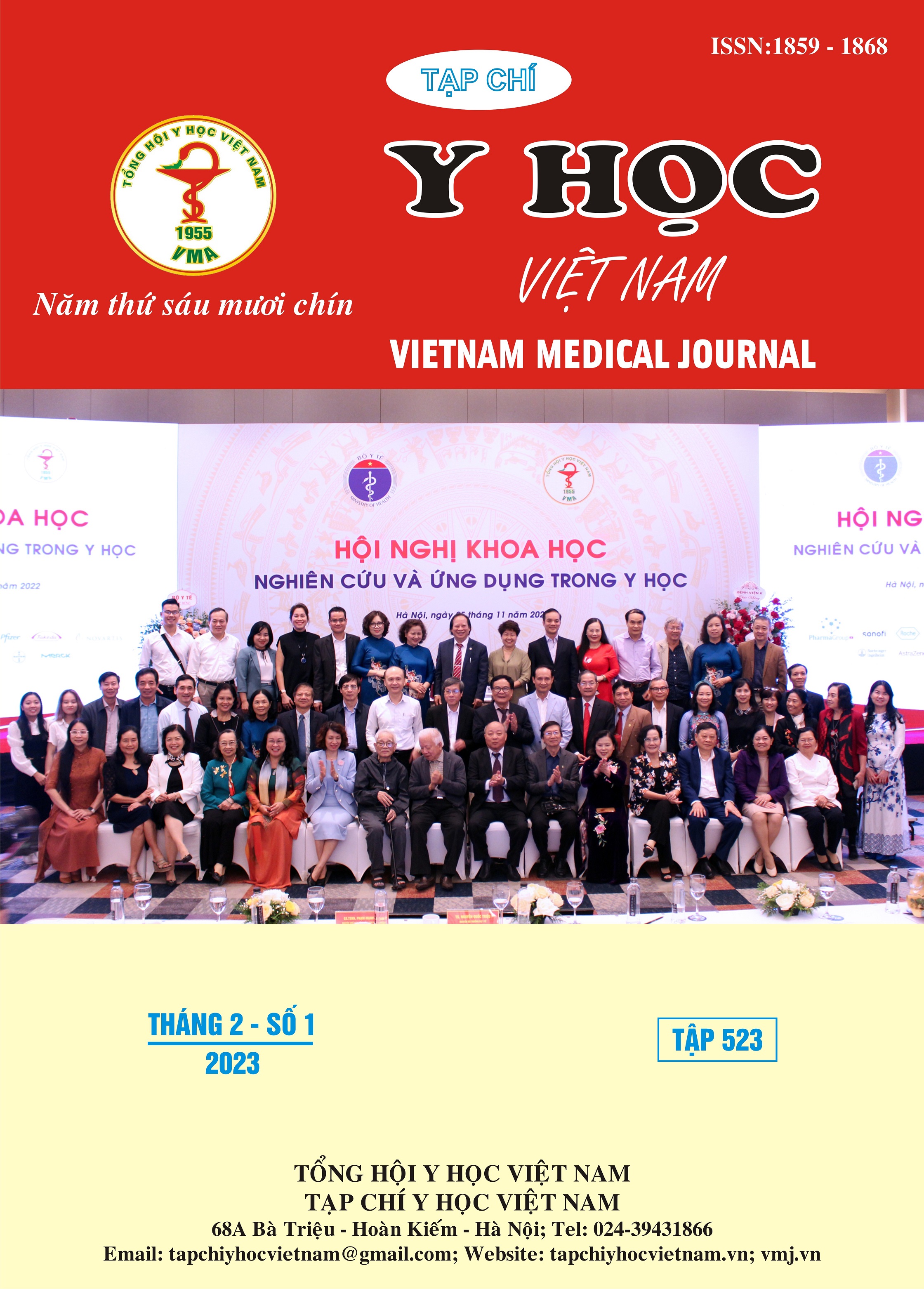INVESTIGATION THE BODY MASS INDEX (BMI) IN PATIENTS WITH CARDIOGENIC SHOCK
Main Article Content
Abstract
Objectives: To investigate the body mass index (BMI) and its relationship with the outcome of cardiogenic shock (CS) patients at 108 Military Central Hospital. Subjects and methods: 60 patients with CS disease in Cardiovascular Intensive Care Unit from January 2022 to June 2022. Assessmented BMI classification and the relationship with some factors that determine the outcome of the treatment, such as length of stay, treatment cost and mortality rate. Results: Average BMI was 22.12 ± 3.22 kg/m2. Most patients with CS had normal BMI (45%) and pre-obesity (31.7%). Mean hospital stay was 7.68 ± 4.80 days. The 30-day mortality rate was 66.7%. The mean hospital stay of overweight patients with cardiogenic shock was 9.15 ± 0.79 days, higher than the non-obese group (6.54 ± 0.87 days), the cost of treatment of overweight patients group was 128.02 ± 13.04 million, also higher than the non-obese group (90.79 ± 13.41 million) with p < 0.05. BMI is correlated with length of hospital stay and treatment cost. There was no statistically significant difference in mortality between the different BMI classification groups. Conclusions: Average BMI of the cardiogenic shock was 22.12 ± 3.22 kg/m2. Most of the patients were in the obese and pre-obese groups. Increased BMI has a relationship with the length of hospital stay and treatment cost.
Article Details
Keywords
Cardiogenic shock, myocardial infarction, obesity, body mass index BMI
References
2. Hermansen G. F., Junker Udesen N. L.et al. (2021), Association of Body Mass Index with Mortality in Patients with Cardiogenic Shock following Acute Myocardial Infarction: A Contemporary Danish Cohort Analysis, Cardiology, 146 (5), 575-582.
3. Meng F., Guo F.et al. (2021), Body mass index and all-cause mortality in patients with cardiogenic shock: A systematic review and meta-analysis, Am J Emerg Med, 43, 97-102.
4. Ponikowski Piotr, Voors Adriaan Aet al. (2016), 2016 ESC Guidelines for the diagnosis and treatment of acute and chronic heart failure: The Task Force for the diagnosis and treatment of acute and chronic heart failure of the European Society of Cardiology (ESC)Developed with the special contribution of the Heart Failure Association (HFA) of the ESC, European Heart Journal, 37 (27), 2129-2200.
5. World Health Organization. Regional Office for the Western Pacific (2000), The Asia-Pacific perspective: redefining obesity and its treatment, Sydney: Health Communications Australia, 55p. Coordinated by the International Diabetes Institute ; co-sponsored jointly by the Regional Office for the Western Pacific (WPRO), World Health Organization, the International Association for the Study of Obesity and the International Obesity Task Force.
6. Patlolla S. H., Gurumurthy G.et al. (2021), Body Mass Index and In-Hospital Management and Outcomes of Acute Myocardial Infarction, Medicina (Kaunas), 57 (9).
7. Sreenivasan Jayakumar, Khan Muhammad Shahzebet al. (2021), Obesity and Outcomes Following Cardiogenic Shock Requiring Acute Mechanical Circulatory Support, 14 (3), e007937.
8. Patlolla S. H., Ponamgi S. P.et al. (2022), Influence of Body Mass Index on the Management and Outcomes of Acute Myocardial Infarction-Cardiogenic Shock in the United States, 2008-2017, Cardiovasc Revasc Med, 36, 34-40.
9. Kwon Woochan, Lee Seung Hunet al. (2022), Impact of the Obesity Paradox Between Sexes on In‐Hospital Mortality in Cardiogenic Shock: A Retrospective Cohort Study, 11 (11), e024143.


